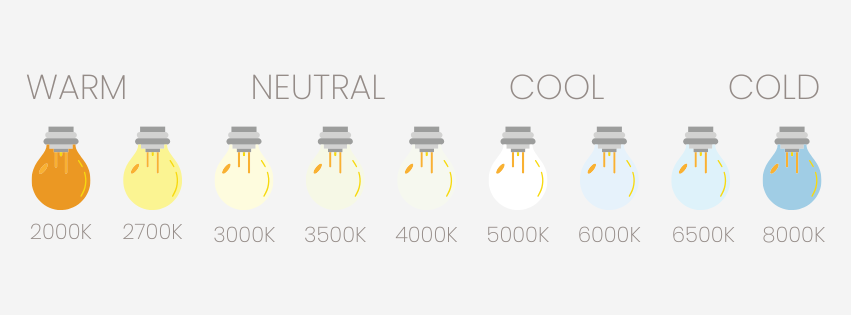The Power of Lighting: Expert Tips for Illuminating Your Space
Light shapes our perception of space in profound ways, yet it's often overlooked. More than mere functionality, thoughtful incorporation can instantly upgrade a room. When designing a home, our team orchestrates multiple light sources, each playing its unique role in creating a welcoming atmosphere. Let’s dive into the lighting world and how to incorporate it properly into your space!
Understanding the foundation: the three types of lighting
Think of ambient lighting as your room's foundation. It provides the general brightness that allows you to navigate and function in a space. Recessed can lights, pendants, track lighting, and flush-mounted fixtures typically serve this purpose. The key is finding the sweet spot—bright enough to illuminate the entire space without creating a stark, overly clinical feel.
If ambient lighting sets the stage, accent lighting directs the show. These strategic light sources draw attention to your space's finest features—perhaps artwork, architectural details, or carefully curated accessories. Consider accent lighting your interior design spotlight, guiding the eye where you want it to linger.
Task lighting serves a clear purpose: adding light for specific activities. From under-cabinet lights that make food preparation easier to reading lamps beside your favorite armchair, these targeted light sources blend practicality with style.
uNderstanding lightbulb color temperature
Before diving into fixture types, it's crucial to understand light temperature, measured in Kelvins (K). This often-overlooked aspect of lighting design can make or break your space's ambiance:
WARM LIGHT (2000k - 3000k)
2000K-2700K: Creates an intimate feeling suitable for living rooms and bedrooms. This range mimics the warm glow of sunset or candlelight, our personal favorite for creating cozy, inviting spaces.
2700K-3000K: Offers a warm white light ideal for bathrooms and dining rooms, providing enough clarity while maintaining a welcoming feel.
Neutral Light (3000K - 4000K)
3000K-3500K: Provides clean, warm-to-neutral light appropriate for kitchens and workspaces where you need clarity without harshness.
3500K-4000K: Delivers bright, neutral light perfect for home offices and task-oriented spaces.
COOL LIGHT (4000K - 6500K)
4000K-5000K: Mimics natural daylight, which is helpful for makeup application or art studios where color accuracy is crucial.
5000K-8000K: Produces a bright, invigorating light similar to noon sunlight, best reserved for garages or security lighting.
Pro tip: For residential spaces, we recommend staying around 2700K for main living areas. This creates a warm, inviting atmosphere while providing adequate illumination for daily activities. Save the cooler temperatures for specific task areas where color accuracy is essential.
Different types of decorative light fixtures
This light fixture is great for spaces with lower ceilings, combining utility with visual appeal. It’s well-suited in hallways, pantries, and closets due to its consistent glow and space for headroom. Today's designs range from minimalist to ornate, ensuring there's a match for every aesthetic.
Pendant lights serve as floating jewelry in your space, providing both illumination and visual interest. For maximum impact, consider spherical or cone-shaped designs that act as sculptural elements. In kitchens, position them 30-36 inches above countertops, adjusting based on your ceiling height and fixture design.
As the reigning monarchs of interior lighting, chandeliers command attention. They come in two varieties: uplighting models that wash ceilings with ambient light, ideal for grand spaces with high ceilings, and downlighting versions that focus on brightening below.
To choose the right size, add your room's length and width in feet—the sum in inches is the recommended chandelier diameter. For instance, a 10' x 13' room would suit a chandelier (10+13) about 23 inches in diameter. Specifically for dining rooms, ensure your chandelier is at least 6 inches narrower than your table's width. With round tables, aim for a fixture diameter that's half to three-quarters of the table's diameter. Hang it 30-36 inches above the table surface for optimal effect.
Pro tip: Purchase an additional chain or rod to tailor the height of your chandelier. While there is no precise mathematical formula, it’s crucial to factor in the interplay of light with windows, architectural elements, and furnishings. Avoid hanging it too high, as doing so might make the light get lost in space. Optimal placement ensures that your chandelier becomes a key player in your space.
Wall sconces create intimate lighting zones while serving as decorative elements. In primary bathrooms, consider long bar sconces for ample light. Powder rooms can handle more decorative, single-bulb options that create a moodier scene.
Even without an art collection, picture lights add sophistication while highlighting cherished pieces.
Pro tip: Position them at a 30-degree angle to the artwork and choose a fixture that's half to two-thirds the width of the frame. Adjustable options allow for a positioning that spotlights the art without visible bulbs.
Instantly adding a decorative element without the need for installation, table lamps are quick fixes for interior lighting. Perfect for side tables, console tables, and countertops, they add flair and height to the space while offering focused and intentional light.
Pro tip: For bedside tables, aim for a minimum height of 30 inches to ensure optimal illumination for activities like bedtime reading. Want to make a bold statement? Go bigger for a more dramatic effect!
Incorporate small lamps on kitchen countertops, bookshelves, or a chest. Their warm, soft glow adds charm to any space, especially paired with a stylish stack of books!
Floor lamps, the taller siblings of table lamps, excel at providing ambient light in low-traffic areas. They're particularly effective behind seating arrangements, marrying practicality with aesthetics.
Incorporating light into your space
Every room deserves its own lighting strategy based on size, function, and existing natural light. While smaller spaces might shine with carefully placed lamps, larger rooms typically need a thoughtful combination of overhead and accent lighting. Consider how light interacts with your space—mirrors and light-colored walls can amplify your lighting choices, creating a more dynamic environment.
Remember that lighting design isn't just about illumination, it's about creating an atmosphere. By understanding these principles and choosing fixtures thoughtfully, you can transform any room from practical to well-designed.









